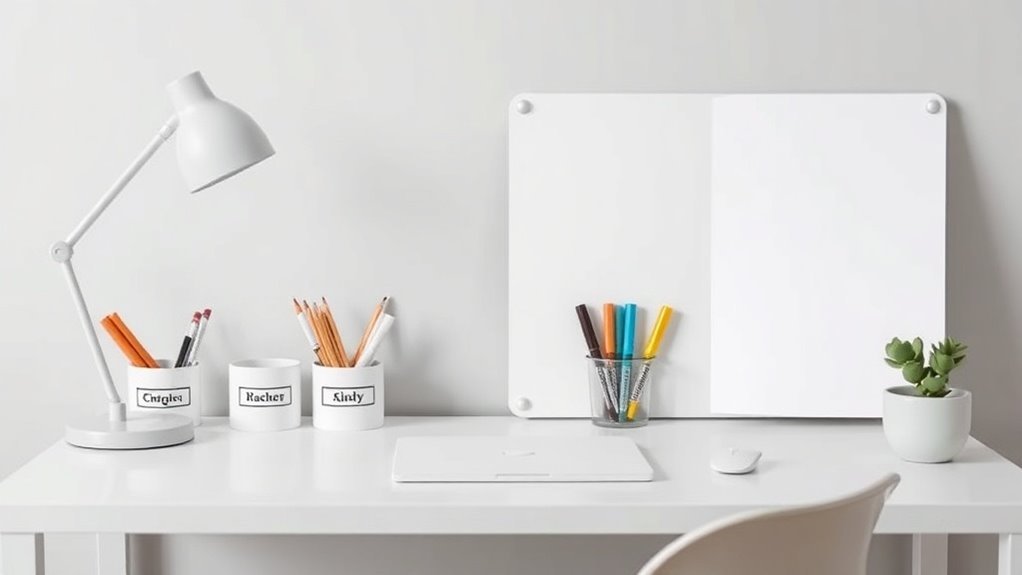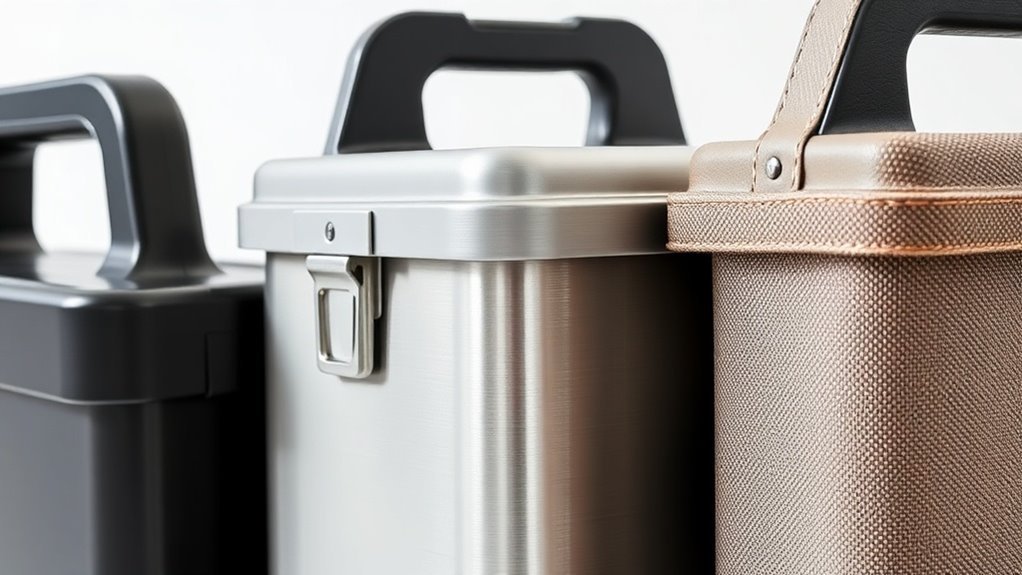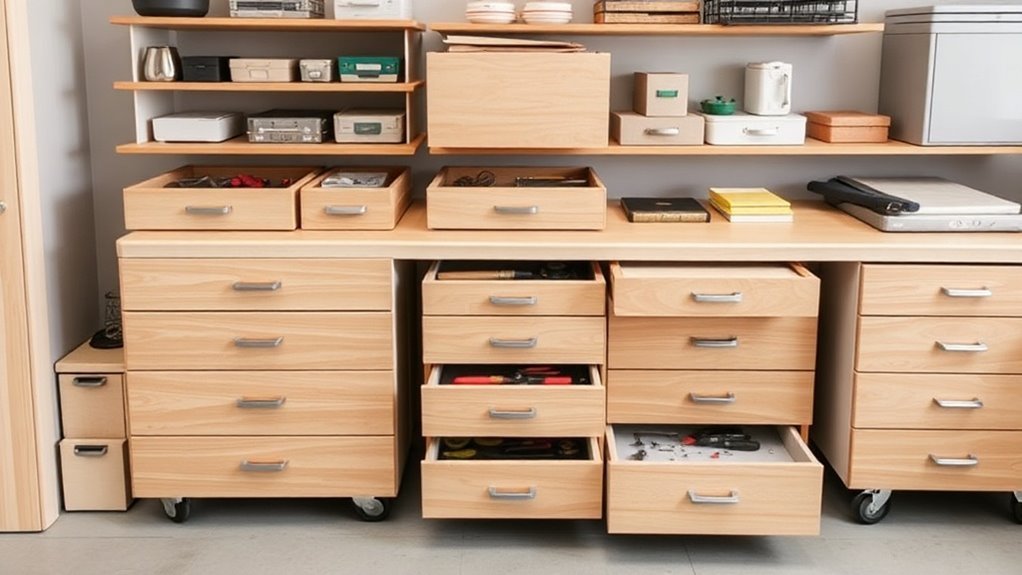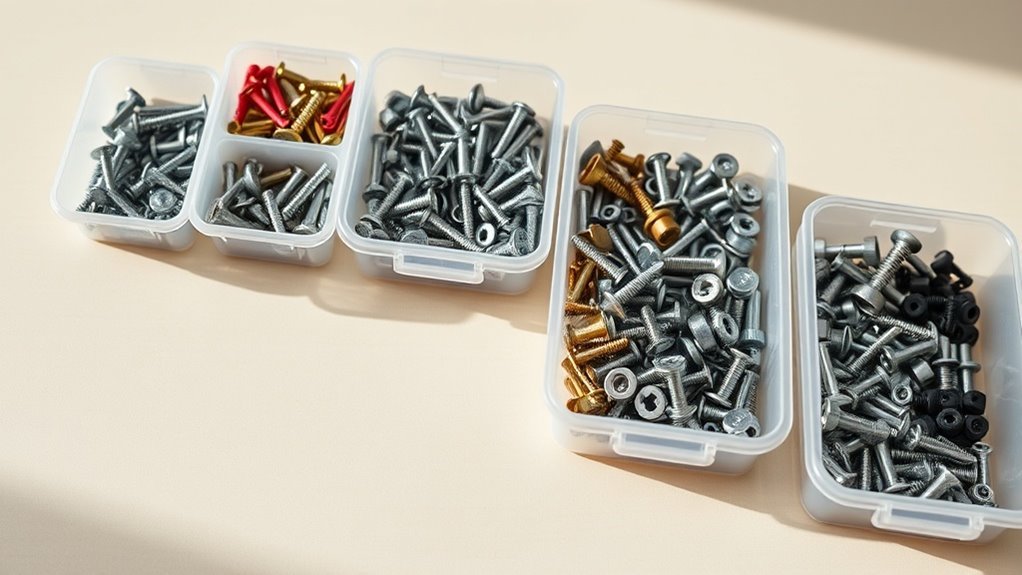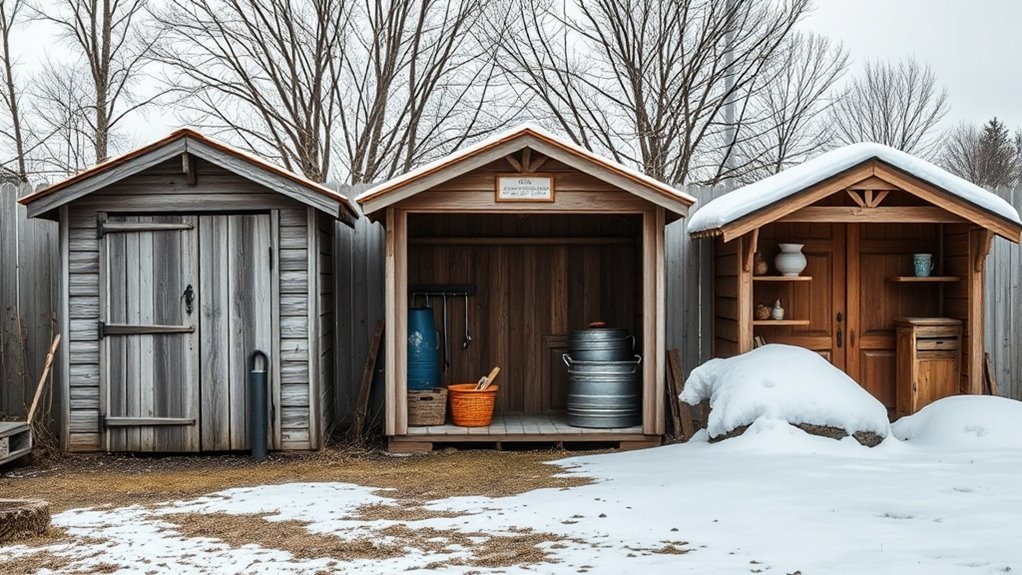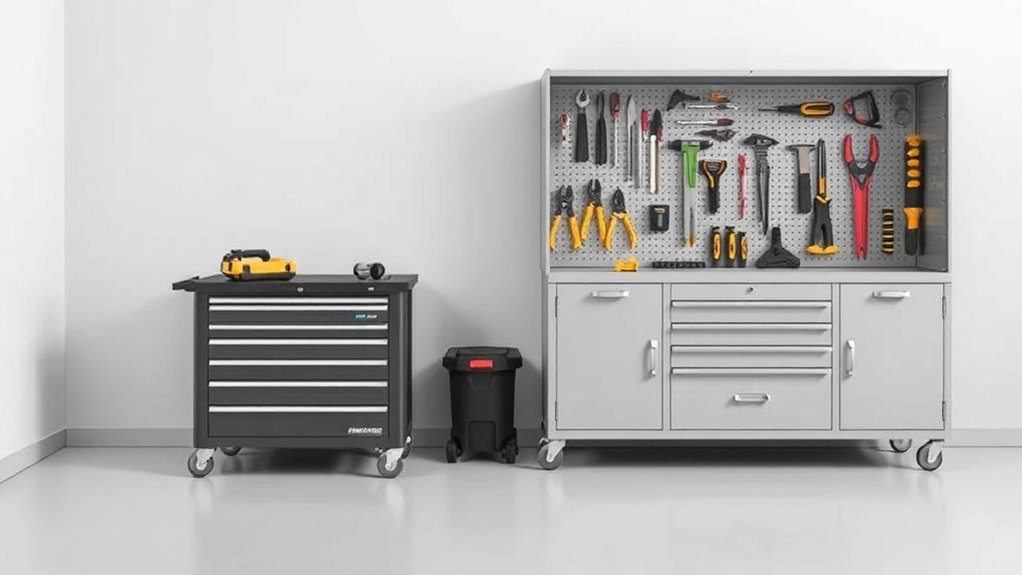History of Tool Chests and Their Evolution

Tool chests have evolved considerably over centuries. Starting as simple wooden boxes for artisans, they’ve transformed into innovative storage solutions that blend functionality and style. As materials changed from wood to metal, designs became more sophisticated, featuring drawers and compartments for organization. The Industrial Revolution introduced mass production, making them more accessible. Today, smart tool chests integrate technology for easier usage. If you’re curious about recent trends like sustainability and customization, there’s more to uncover.
Key Takeaways
- Tool chests originated in ancient civilizations as simple wooden boxes for artisans, reflecting both functionality and craftsmanship.
- Early designs used wood, evolving through the incorporation of metal for enhanced durability and security.
- The Industrial Revolution standardized tool sizes and made tool chests more accessible and affordable through mass production.
- Modern tool chests integrate technology for tracking and inventory management while emphasizing aesthetics and ergonomic design.
- Future trends focus on sustainability, customization, and enhancing workspace appeal with eco-friendly materials and modular designs.
The Origins of Tool Chests: a Glimpse Into History
If you’ve ever wondered where tool chests originated, you’re not alone. Tool chests have a fascinating history that dates back to ancient civilizations. Craftsmen needed a practical way to transport and store their tools, leading to the creation of early versions that were often simple wooden boxes.
These storage solutions were essential for artisans like carpenters and blacksmiths, ensuring their tools stayed organized and protected. As you might guess, the design and complexity of these chests evolved over time.
Initially utilitarian, they began to showcase craftsmanship with intricate carvings and adornments. By understanding their origins, you gain insight into the significance of tool chests in artisanal practices throughout history, reflecting the blend of functionality and artistry that’s still appreciated today.
The Evolution of Materials: From Wood to Metal
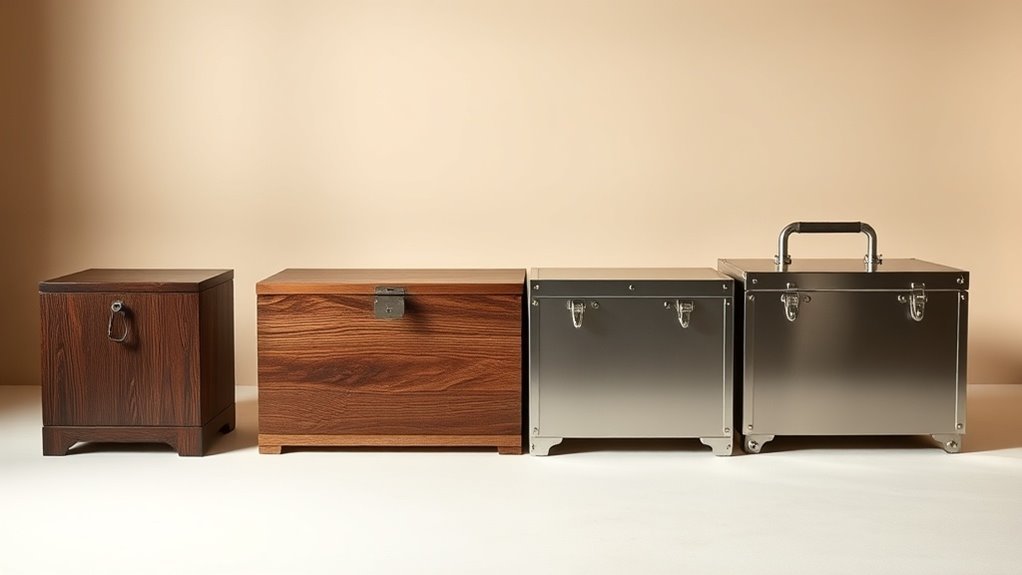
As tool chests evolved over the centuries, the materials used in their construction underwent significant changes driven by advancements in technology and craftsmanship.
Initially, wood was the primary material, appreciated for its accessibility and workability. Craftsmen shaped oak, pine, and cedar into sturdy chests, maximizing functionality and aesthetics.
However, as techniques improved and new materials became available, metal began to emerge as a viable alternative. Steel, aluminum, and other metals offered enhanced durability and security, making them ideal for protecting valuable tools.
Today, you’ll find a mix of materials, blending traditional wood craftsmanship with modern metal elements, reflecting both heritage and innovation in tool storage solutions. Understanding how climate affects tool storage is crucial for preserving the integrity of these materials and the tools they house.
This evolution showcases how practicality and style continue to shape tool chest designs.
The Impact of the Industrial Revolution on Tool Storage
The Industrial Revolution marked a turning point in how tools were stored and organized, leading to innovations that revolutionized tool chests.
With mass production techniques, you started to see more standardized tool sizes and shapes, which made storage more efficient. The introduction of new materials, like metal, meant tool chests were more durable and could withstand the rigors of a busy workshop.
As manufacturing processes advanced, you found that tool storage became more accessible and affordable for everyone, not just professionals. Workshops transformed into organized spaces where tools were easily accessible, enhancing productivity.
Ultimately, the Industrial Revolution set the stage for a more systematic approach to tool organization, paving the way for future innovations in storage solutions.
Innovative Designs: Drawers, Compartments, and Organization
While tool chests evolved through innovation, the introduction of drawers and compartments fundamentally changed how tools were organized.
Imagine opening your tool chest and finding everything neatly categorized, thanks to clever designs.
Drawers allow you to store small items like screws and nails, keeping them safe from getting lost.
Drawers provide a secure space for small items, ensuring screws and nails stay organized and easy to find.
Compartments optimize space, ensuring your larger tools don’t crowd your smaller essentials.
This level of organization enhances your efficiency, making it easier to find what you need during projects.
With varied sizes and styles, you can customize your chest to suit your specific needs.
It’s not just about storage anymore; it’s about making your workspace functional and accessible.
Embracing these innovative designs gives you a seamless working experience, much like modular storage systems which enhance organization and efficiency in modern workspaces.
Tool Chests in the 20th Century: Size, Portability, and Functionality
With the dawn of the 20th century, tool chests began to reflect the changing needs of tradespeople and hobbyists alike, prioritizing size, portability, and functionality.
As workspaces evolved, so did the demand for more compact and transportable storage solutions. You’d find tool chests made from lightweight materials like aluminum and plastic, allowing for easy movement between job sites.
The introduction of wheels and integrated handles made carrying tools a breeze. Additionally, designs became more practical, featuring adjustable compartments and customizable layouts to accommodate various tools and sizes.
The Rise of Modular Tool Storage Solutions
As you look for ways to organize your tools more efficiently, modular storage solutions might catch your eye. These systems not only offer flexibility but also adapt to your needs as they change. Today, popular modular options can help you maximize space while keeping your tools accessible and organized. By implementing smart drawer systems, you can further enhance the efficiency of your workspace.
Benefits of Modular Design
Modular tool storage solutions have gained popularity for their unmatched versatility and efficiency, catering to the diverse needs of both DIY enthusiasts and professionals. With their customizable design, you can easily adapt the layout and storage capacity to fit your specific requirements.
Here’s a quick look at the benefits of modular designs:
| Benefit | Description | Example |
|---|---|---|
| Customization | Adjust storage to your needs | Different bin sizes |
| Portability | Easy to transport between job sites | Stackable components |
| Space Optimization | Maximize available workspace | Vertical storage |
| Durability | Built to withstand wear and tear | High-quality materials |
| Scalability | Expand as your collection grows | Add-on modules |
Using modular systems can simplify your workflow and make organizing tools a breeze.
Popular Modular Systems Today
Today’s tool storage market is bustling with innovative modular systems that cater to a variety of needs, making it easier for users to stay organized.
Popular brands like Tanos, DeWalt, and Milwaukee have led the charge, offering stackable boxes that you can tailor to your specific tool collection. These systems often feature customizable inserts for different tools, maximizing efficiency.
Many of these modular units incorporate durable materials perfect for job sites or home use, ensuring longevity.
Whether you’re a DIY enthusiast or a professional tradesperson, you can mix and match sizes and components to fit your space and workflow.
With easy portability and compatibility, it’s never been simpler to create a personalized storage solution.
Technological Advancements: Smart Tool Chests and Digital Integration
While traditional tool chests have served craftsmen well for centuries, the emergence of smart tool chests is revolutionizing how tools are organized and accessed.
These innovative designs often integrate digital technology, allowing you to track your tools’ locations through your smartphone or tablet. You can easily monitor inventory levels, receive alerts for missing tools, and even manage maintenance schedules.
Innovative designs blend digital tech with organization, enabling tool tracking via smartphone, inventory monitoring, and maintenance management.
Some models come equipped with built-in charging ports for your devices, while others feature Bluetooth connectivity to sync with project management apps.
This fusion of technology and practicality means you can spend less time searching for tools and more time focusing on your craft. Additionally, being aware of privacy concerns linked to these connected technologies is essential as you make your investment. Smart tool chests are truly shaping the future of tool storage and accessibility.
The Role of Aesthetics in Modern Tool Chest Design
Aesthetic considerations have become increasingly important in modern tool chest design, reflecting the user’s style and elevating the workspace’s overall appeal.
You’re no longer just storing tools; you’re showcasing them. A beautifully designed tool chest can inspire creativity and enhance productivity.
Here are some key elements you might appreciate in contemporary designs:
- Colors: Vibrant hues or classic neutrals to match your vision.
- Materials: High-quality woods or metals that offer durability and style.
- Finish: Sleek, polished surfaces that make maintenance easier.
- Ergonomics: Designs that focus on ease of access while still looking attractive.
With these aesthetic components, your tool chest can be a functional yet eye-catching element of your workshop.
Future Trends: Sustainability and Customization in Tool Storage
As tool storage evolves, sustainability and customization are becoming central themes for both makers and hobbyists. You’re likely noticing a shift towards eco-friendly materials and practices in tool chest production.
Manufacturers are incorporating recycled woods and metals, ensuring your storage options are more environmentally friendly than ever. This trend aligns with the growing emphasis on battery recycling as a crucial part of reducing the ecological footprint associated with power tools.
Manufacturers are now using recycled materials in tool chests, making your storage choices more sustainable and eco-conscious.
Customization is also gaining traction. You can tailor tool chests to fit your specific needs, using modular designs that allow for personalized layouts and compartments.
This way, your tools are organized and easily accessible, enhancing your workflow.
Questions
What Are the Most Popular Brands of Tool Chests Today?
Some of the most popular tool chest brands today are Craftsman, Husky, Snap-on, and Milwaukee. You’ll find quality, durability, and stylish designs in their products, making it easier for you to organize your tools efficiently.
How Do I Choose the Right Tool Chest for My Needs?
With over 60% of DIYers using tool chests, you should assess your project types, space availability, and budget. Consider features like portability, drawer configurations, and material durability to find the perfect fit for your needs.
What Is the Average Cost of a Quality Tool Chest?
A quality tool chest typically costs between $150 and $1,500, depending on size, material, and features. You should consider your budget, storage needs, and how often you’ll use it to make the best choice.
How Can I Maintain and Care for a Tool Chest?
Regularly dust your tool chest and apply a protective finish every six months. Interesting fact: a well-maintained tool chest can last over 20 years, enhancing your workshop’s efficiency and keeping your tools in prime condition.
Are There Specific Tool Chests for Different Trades or Professions?
Yes, there’re specific tool chests designed for various trades. Electricians often use smaller chests for quick access to tools, while carpenters might choose larger, more organized chests to accommodate extensive tool collections. It’s all about your needs!
Conclusion
In the evolving landscape of tool chests, you see a symbol of progress—a sturdy oak slowly transforming into sleek steel. Each iteration mirrors your needs and innovations, reflecting the journey from raw craftsmanship to smart technology. As you push toward a future of sustainability and customization, remember every tool chest tells a story, cradling not just tools but your creative potential. So, as you open your next chest, envision the possibilities waiting to be crafted within its confines.

